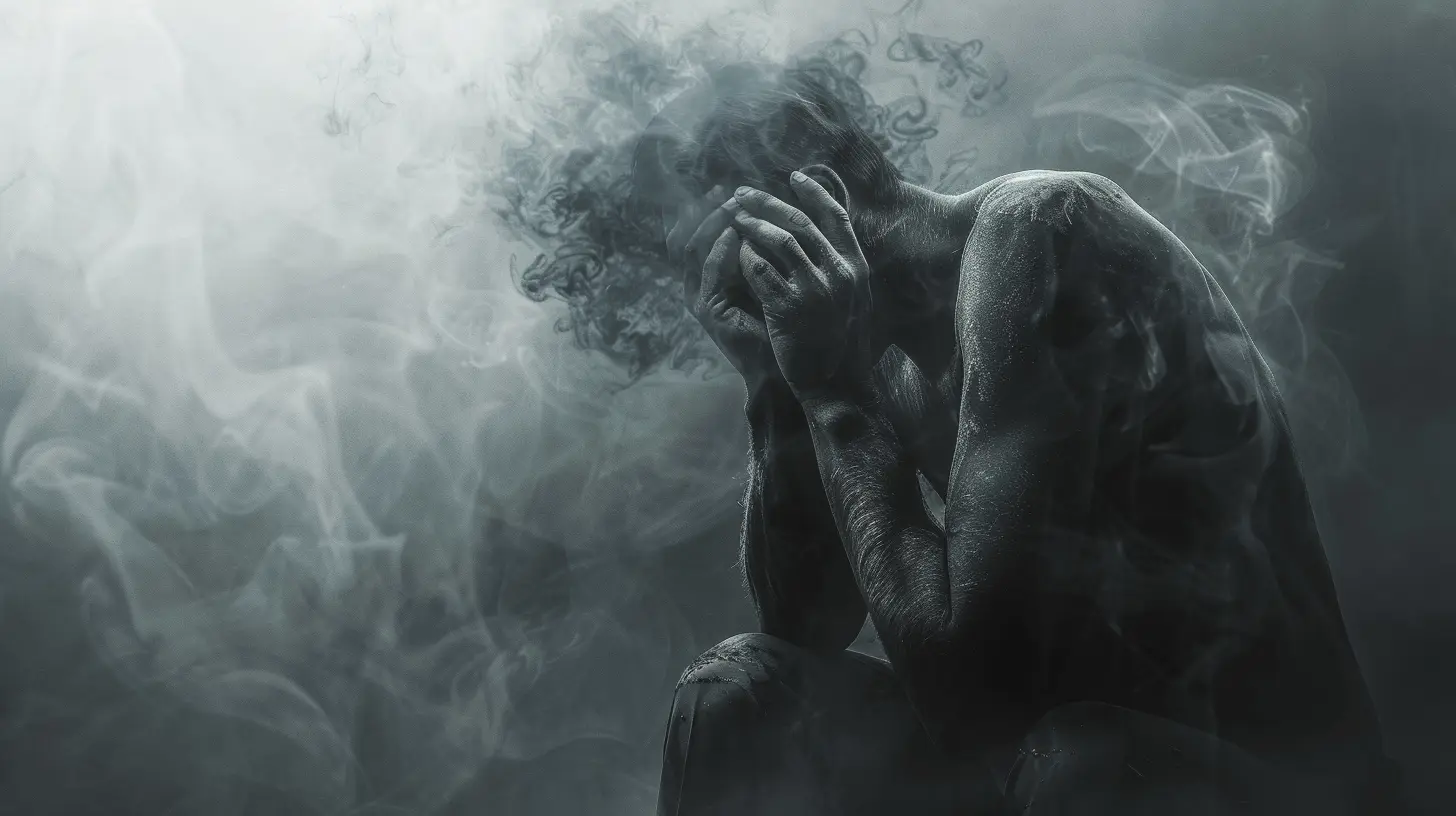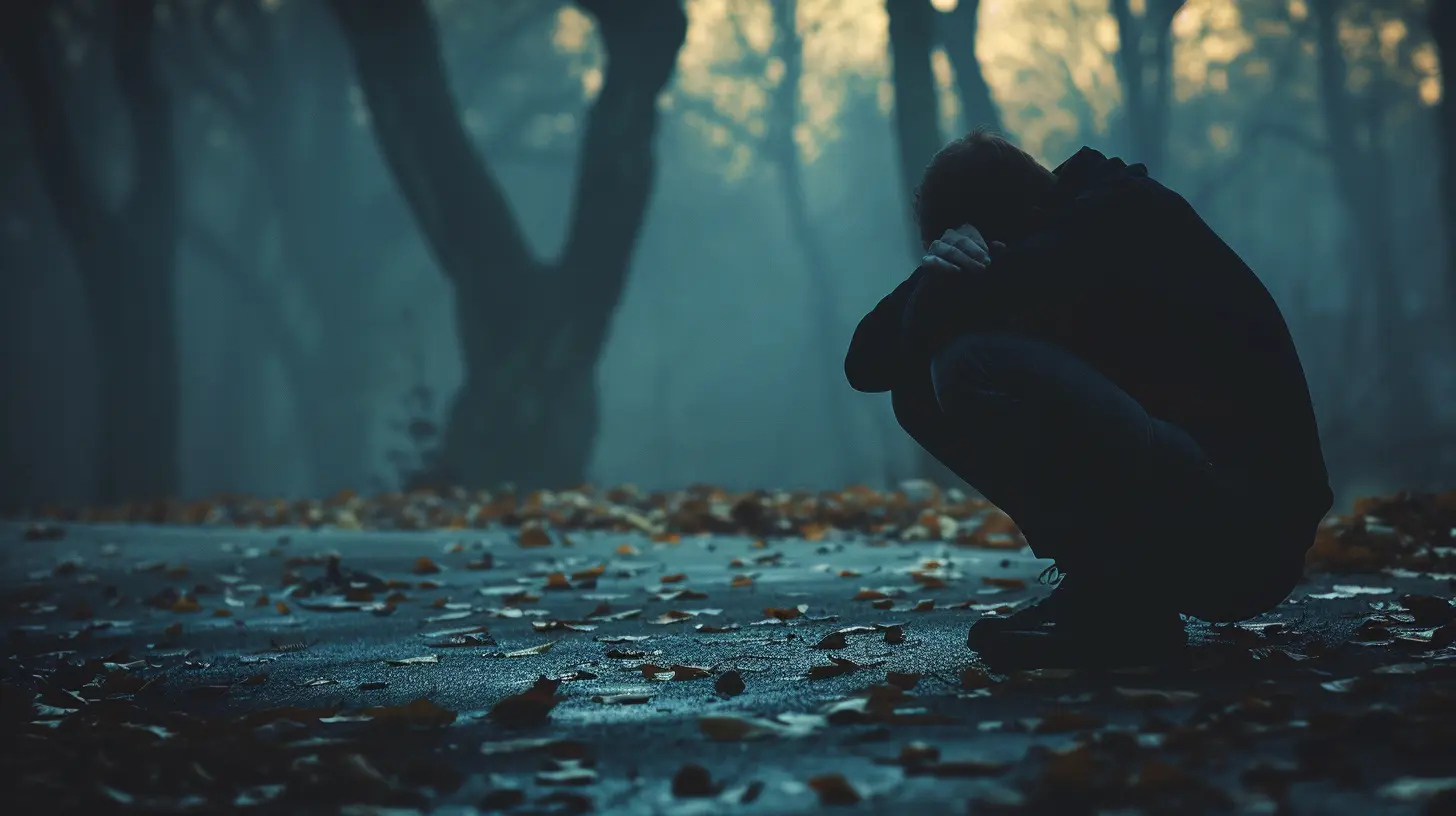The Silent Struggle: How Stigma Prevents People from Seeking Help
24 July 2025
We hear it all the time—“It’s okay not to be okay.” But let’s be real, how many of us actually believe that in practice? For countless people battling mental health issues, seeking help isn't as easy as calling a therapist or opening up to a friend. Why? The invisible barrier: stigma.
Even in today’s more “woke” society, shame, judgment, and misinformation keep many people suffering in silence. This silent struggle isn’t just frustrating—it’s dangerous. So let’s talk about why stigma is such a big deal, how it's kept alive, and most importantly, what we can do about it.
What Is Mental Health Stigma, Anyway?
Stigma around mental health is basically that icky feeling of being devalued or judged because you're dealing with something like depression, anxiety, or any other psychological condition. It’s like carrying a backpack that’s already heavy with struggles, then someone throws in a couple of bricks made of shame.There are actually two main types:
- Social Stigma: This is when society has negative attitudes or stereotypes about mental illness. It’s what makes people call others “crazy” or assume therapy is only for the weak.
- Self-Stigma: This comes from within. When you internalize all those negative beliefs and start thinking, “Maybe something is actually wrong with me.”
Both types can be equally damaging. And together? A perfect storm that pushes people away from reaching out.
Why Do People Still Associate Shame with Mental Health?
It’s 2024, and we all love talking about mental health on Instagram, right? So what gives? Why are people still keeping quiet about their mental battles?1. Cultural Beliefs and Traditions
In many cultures, mental illness is still a big taboo. It’s seen as a weakness, or worse, a disgrace to the family. Some people are taught to “tough it out” or “pray it away,” making professional help feel not just unnecessary but wrong.2. Media and Misrepresentation
Let’s face it, Hollywood hasn’t done us any favors. Characters with mental illness are often portrayed as dangerous, unstable, or tragic. These skewed portrayals paint a false picture, feeding the idea that mental illness equals "broken" or "scary."3. Lack of Education
Many still believe myths like “therapy is just talking” or “antidepressants change your personality.” Without proper knowledge, people lean on fear, and fear breeds stigma.
The Real-World Impact: What Happens When People Avoid Help?
When stigma wins, people lose—big time.Delayed Treatment
Too many people wait until they're in crisis before they even consider reaching out. By then, the condition might have worsened, making recovery longer and harder.Isolation
Shame makes people withdraw, going silent at a time they most need connection. Imagine needing air but being too embarrassed to ask for it. That’s what not seeking help can feel like.Poor Physical Health
Mental and physical health are tightly connected. Untreated mental conditions can lead to issues like insomnia, high blood pressure, or even chronic pain. So it’s not “just in your head”—it affects your whole body.Increased Risk of Self-Harm or Suicide
This is the most heartbreaking consequence. People who feel isolated, ashamed, and unsupported are at higher risk of harming themselves. And often, they never even told anyone they were struggling.
Real Stories Behind the Silence
To put things into perspective, let’s talk about Alex (not a real name, but a real story).Alex is a 26-year-old engineer. On paper, everything looks fine—great job, a nice apartment, weekends filled with hobbies. But inside? Chronic anxiety. Alex wakes up with a racing heart, avoids social settings, and overthinks every interaction.
Even though friends have talked openly about therapy, Alex can't bring himself to go. Why? Because in his family, mental health is something "you don't talk about." Therapy, to them, is admitting defeat.
It took a panic attack at work and a concerned coworker pushing him to open up before Alex finally saw a therapist. His only regret? Not going sooner.
The Role of Language: Words Matter
Sometimes, stigma is hiding in plain sight—in our everyday conversations.Think about how often we hear phrases like:
- “He’s totally psycho.”
- “She’s being bipolar today.”
- “You need to chill, it’s not that deep.”
These phrases might seem harmless, even funny, but they reinforce the idea that mental illness is something to mock or fear. Changing the way we talk can do wonders for breaking down prejudice.
Barriers to Seeking Help Beyond Stigma
While stigma is huge, it's not the only thing stopping people. Let’s not forget:- Cost: Therapy isn't cheap. Without insurance, one session can cost as much as a fancy dinner (and sadly, some people have to choose).
- Access: In rural areas or underserved communities, mental health services are scarce or nonexistent.
- Time: Between work, family, and responsibilities, finding time for therapy can feel impossible.
But here’s the thing—while these are legitimate hurdles, stigma magnifies each one. If someone already feels ashamed, every little barrier becomes a wall.
So, What Can We Do About It?
Now that we’ve hashed out the problem, let’s talk solutions. You don’t need to be a psychologist or start a movement to help. Little actions make a huge difference.1. Normalize the Conversation
Talk about your own mental health journey. Got a therapist? Mention it. Felt anxious lately? Share it. The more we talk, the less scary it becomes.2. Challenge Stereotypes
If someone makes a joke about mental illness or uses harmful language, call it out (kindly, of course). Education starts with awkward conversations.3. Support Others Without Judgment
If someone opens up to you, listen—really listen. Don’t try to fix it or offer clichés like "just think positive." Just be there. Your presence can be the difference between silence and healing.4. Encourage Help-Seeking Behavior
Saying “you should talk to a therapist” might not cut it. Offer to help research options, share your own experiences if you’ve had therapy, or even just say “You deserve support.”The Workplace Dilemma: Mental Health and Job Shame
Work environments are another major battleground for stigma. People fear that taking a mental health day will be seen as slacking. Some worry that admitting to anxiety or depression will hurt career prospects.Let’s change that by:
- Encouraging companies to offer mental health days without guilt.
- Creating safe spaces for employees to talk.
- Training managers on how to respond with empathy, not judgment.
Changing the Future of Mental Health
The good news? We are slowly turning a corner. Social media campaigns, mental health awareness weeks, and younger generations being more emotionally open are all signs of progress.But we’ve still got a long way to go.
Breaking the stigma isn’t a one-time task—it’s a culture shift. It’s about choosing compassion over labels, curiosity over judgment, and understanding over fear.
Final Thoughts: From Silence to Strength
At the end of the day, asking for help shouldn't feel like a confession. It should feel like a courageous, empowering step—because it is.Mental health is just health. No one should be suffering in silence because of shame that doesn’t belong to them.
Let’s be the generation that makes it okay to show up, speak out, and seek help—with no apologies, no judgment, and no shame.
all images in this post were generated using AI tools
Category:
Mental Health StigmaAuthor:

Ember Forbes
Discussion
rate this article
1 comments
Jemima Harris
This article sheds light on an important issue: stigma around mental health often keeps individuals from seeking the help they need. By promoting open discussions and understanding, we can create an environment that encourages people to reach out, ultimately fostering healing and resilience within our communities.
August 12, 2025 at 2:26 AM

Ember Forbes
Thank you for your thoughtful comment! I completely agree that open discussions are vital in reducing stigma and encouraging individuals to seek the help they need. Together, we can create a more supportive environment for mental health.


